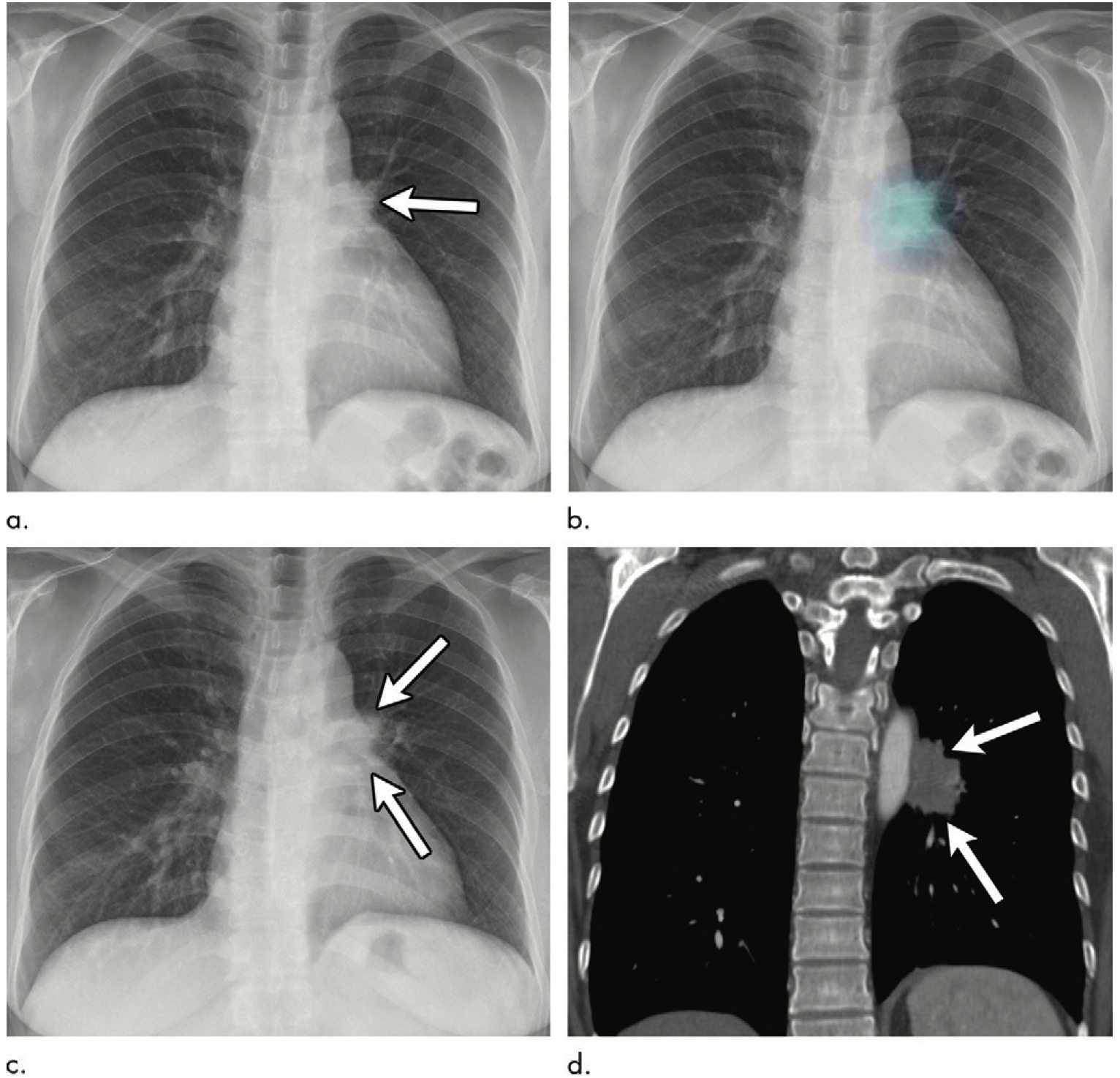Deep Learning Algorithm Identifies More Missed Lung Cancers on X-ray
Using a deep learning-based automatic detection algorithm can identify more lung cancers on chest X-ray, potentially avoiding unneeded chest CT and accelerating treatment.
A new deep learning tool could improve the performance of chest radiography in detecting lung cancers, according to new research.
Despite being a front-line tool for lung cancer detection, the sensitivity of chest radiography ranges from 44 percent to 87 percent, depending on the study population. This variability frequently leads to avoidable CT scans and radiation exposure, particularly in individuals without lung cancer lesions.
In an article published July 21 in Radiology, investigators from South Korea discussed their deep learning-based automatic detection algorithm (DLAD) that is designed to decrease the amount of missed cases without prompting a need for unnecessary follow-up CT imaging.
Images in a 52-year-old woman with a 10 pack-year history of smoking (a) Initial chest radiograph shows a 2.4-cm nodule (arrow) overlapped by left hilar shadow. This lesion was undetected on the original report. (b) The deep learning–based automatic detection algorithm (DLAD) correctly detected this lesion with a probability value of 35%. Without DLAD, only two observers correctly detected the lesion; however, with DLAD, all nine observers detected the lesion and recommended chest CT for further evaluation. (c) Follow-up chest radiograph at time of diagnosis shows interval increase in lesion (arrows). (d) Follow-up chest CT image at time of diagnosis shows enhancing mass in left lower lobe (arrows). Patient was diagnosed with stage IV lung adenocarcinoma as bone metastasis was observed. The time between the initially over- looked chest radiograph and pathologic diagnosis was 447 days. Courtesy: Radiology, RSNA

“Our results suggest that chest radiograph interpretation with a DLAD can help reduce the number of overlooked lesions and can enable diagnosis of lung cancer, without increasing unnecessary chest CT examinations in healthy individuals,” said the team led by Sowon Jang, from the radiology department at Seoul National University Bundang Hospital. “Considering that lung cancer is the leading cause of cancer-related deaths, earlier diagnosis at chest radiography using a DLAD may reduce mortality from lung cancer in a more general population.”
To determine the efficacy of their DLAD, Jang’s team engaged nine observers – six chest radiologists and three residents – to retrospectively review the chest radiographs of 117 people who were previously identified to have lung cancer between 2010 and 2014, as well as 234 individuals in a healthy control group. Of those who had diagnosed lung cancers, 105 had been initially overlooked on original radiographs with an average of 19 months between the initial radiograph and ultimate diagnosis.
Related Content: Low Dose CT Lung Cancer Screening Program Findings Similar to National Trial
The observers reviewed the chest radiographs twice – once without the DLAD and once with – and both the radiologists and the residents performed better with the algorithm, according to the study analysis. Based on these results, Jang’s team determined that average area under the alternative free-response receiver operating curve for all the observers rose from 0.67 without the DLAD to 0.76 with it. In particular, performance improvement for radiologists was 0.69 to 0.77, and for residents, it was 0.64 to 0.74.
In addition, observers pinpointed more of the previously overlooked cancers when using the DLAD – 53 percent with compared to 40 percent without – and they also recommended chest CT for more patients with overlooked lung cancers when using the algorithm. For the patients who had actionable lung cancers, CT recommendations rose from 54 percent without the DLAD to 71 percent with it. Suggestions for follow-up CT scans in the healthy control group did not change, according to Jang’s team.
Overall, the team said, the DLAD is beneficial across the board in helping providers identify lung cancers that could be overlooked on first-round chest radiography, but early career professionals and those without thoracic sub-specialty training will likely see the most improved performance.
“Less-experienced readers benefited obviously with DLAD use,” they said. “Because the number of expert radiologists is limited, our findings suggest that use of a DLAD could reduce errors by novice readers and could improve the quality of reading.”
What is the Best Use of AI in CT Lung Cancer Screening?
April 18th 2025In comparison to radiologist assessment, the use of AI to pre-screen patients with low-dose CT lung cancer screening provided a 12 percent reduction in mean interpretation time with a slight increase in specificity and a slight decrease in the recall rate, according to new research.
Meta-Analysis Shows Merits of AI with CTA Detection of Coronary Artery Stenosis and Calcified Plaque
April 16th 2025Artificial intelligence demonstrated higher AUC, sensitivity, and specificity than radiologists for detecting coronary artery stenosis > 50 percent on computed tomography angiography (CTA), according to a new 17-study meta-analysis.
Can CT-Based AI Radiomics Enhance Prediction of Recurrence-Free Survival for Non-Metastatic ccRCC?
April 14th 2025In comparison to a model based on clinicopathological risk factors, a CT radiomics-based machine learning model offered greater than a 10 percent higher AUC for predicting five-year recurrence-free survival in patients with non-metastatic clear cell renal cell carcinoma (ccRCC).